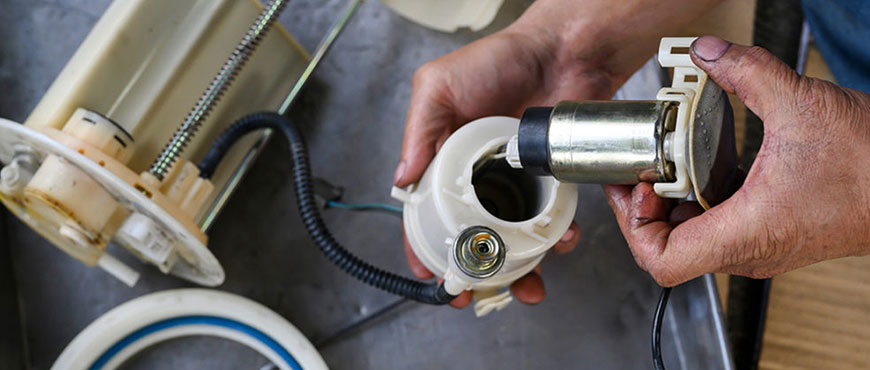
Some things can leave motorists stranded more quickly than anything. Among them is a failed fuel pump. This crucial car part is the heart of the vehicle’s petrol system, despite being out of sight (and out of mind). As its name states, it is responsible for delivering petrol to the engine from the gas tank. It is the heart of the car’s fuel system.
If God forbid the fuel pump of a car fails, then the car stops running. This is why understanding the top causes of fuel pumping machine damage and malfunction is the first step in avoiding this inconveniently expensive breakdown.
Though an automotive fuel pump is designed to be durable, numerous issues can lead to it failing prematurely. This article will serve as a guide that can help identify the key culprits that lead to a car’s gasoline siphon failing. It will also explain tips to prevent its failure and ensure the vehicle runs reliably in the long term.
Motor vehicles with an internal combustion engine have a gasoline siphon. They commonly run on diesel and gasoline. The primary function of this machine is to supply gasoline/diesel from the tank to either the carburetor or the injectors. This is where it mixes the gasoline with air from the air intake.
The air-fuel mixture then travels to the combustion chamber. It converts it into energy, which in turn powers the engine.
Another point to note is that the kind of machine used depends on the type of car engine. Ones with gasoline or diesel injectors often use electrical or high-pressure mechanical siphons. At the same time, carbureted engines use low-pressure mechanical siphoning machines.
The gasoline siphon of a car delivers a consistent and steady supply to the engine. It helps ensure proper combustion. This combustion is key to the vehicle’s gasoline economy and overall performance.
The car engine will experience issues when the gasoline siphoning machine isn’t functioning. Among them are:
The car’s gasoline siphon helps keep the engine running by delivering the right amount of petrol at the correct pressure. If it fails, then the car’s performance suffers. Now is a good time to explore the main reasons why the gasoline siphoning machine of a vehicle breaks down and their possible solutions to keep that critical component running:
One of the most common (and often overlooked) of bad fuel pump symptoms is consistently driving a car on low gasoline. The petrol present in the tank acts as a coolant for the siphon. If the gasoline level gets very low, the machine is not adequately cooled. It overheats and wears out prematurely.
It can be prevented by keeping the petrol tank at least three-quarters full. It not only extends the gasoline siphon’s time but also reduces the risk of debris landing at the bottom of the tank. That debris can clog both the machine and the filter.
Poor-quality petrol can cause problems in the gasoline siphon. Contaminants present in it can clog both the machine and its injectors. This reduces the engine’s efficiency, causing it to slow down (and potentially fail). The presence of water in petrol is another problem that can corrode it.
These issues can be averted. Fill the tank from reputable petrol stations. In case of suspected petrol contamination, have the tank cleaned and inspected by a professional to prevent further damage.
One of the most common faulty fuel pump symptoms is that a lack of regular maintenance can cause these siphons to fail. The filter gets clogged with debris over time. The outcome is that it has to work harder and thus endure strain. This significantly reduces its lifespan.
Regular maintenance and replacing exhausted gasoline filters on time keep the system efficient. Most automobile manufacturers recommend replacing the siphon after every 30,000 kms. Yet it is best to refer to the car owner’s manual for specific guidelines.
The gasoline siphon of a car relies on a proper electrical supply to work like most automotive components. Failure in the wiring, corroded connectors, or a failing relay can affect the power supply. This can cause the machine to fail. Electrical issues usually go unnoticed until it stops working altogether.
Preventive care involves having the car checked by a trusted mechanic when the electrical issues appear. Among the symptoms are difficulty in starting the vehicle or inconsistent gasoline delivery.
Excessive strain on the siphon can be due to either clogged filters, low-quality gasoline, or low gasoline levels in the tank. These factors lead to overheating. This reduces the machine’s lifespan and can cause sudden breakdowns.
Proactively maintaining the car and avoiding situations that overwork the gasoline siphon works wonders. Towing heavy loads with an underpowered vehicle is never advisable, as it can strain the siphoning machine. Avoiding such practices with cars helps a lot.
The gasoline siphon is indeed the vehicle’s heart. If it faces issues that prevent it from supplying petrol to the engine, then it needs to be checked by a professional mechanic. Ignoring the signs of the petrol/diesel siphoning machine getting damaged can lead to long-term issues with the vehicle. Motorists can be left stranded, resulting in inconvenience and a hefty bill for getting the machine fixed.
Timely maintenance and checkups of vehicles are essential. It helps determine the areas that need repair and those that require timely maintenance. This is why keeping this pump in proper working condition is key to the vehicle’s long life and good health.
30C / II - 24th Street D.H.A Phase II Extension Phase 2 Commercial Area, Karachi, Sindh
Rentals@deinfa.com
+92 331 3334632
+92 321 8291537
© 2025. All Rights Reserved by Deinfa. | Developed by: Digital Eggheads.
Starting from five vehicles and growing to a fleet of over 500, Deinfa has become a renowned name in the car rental industry.